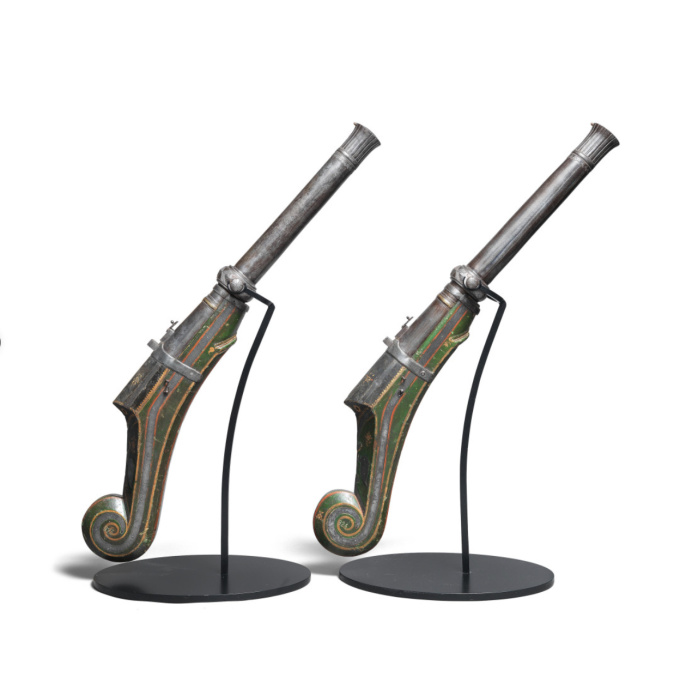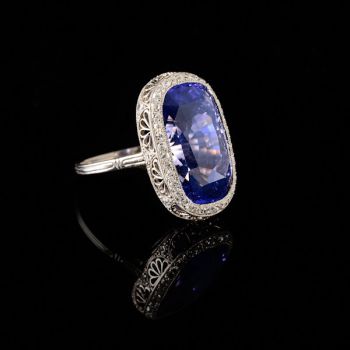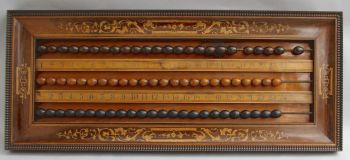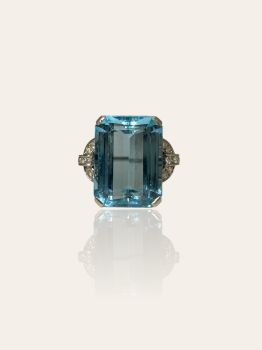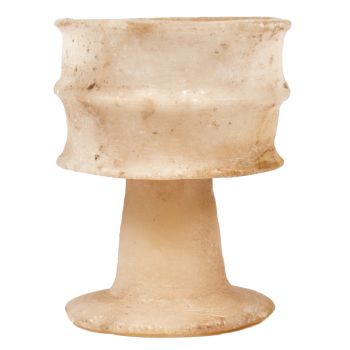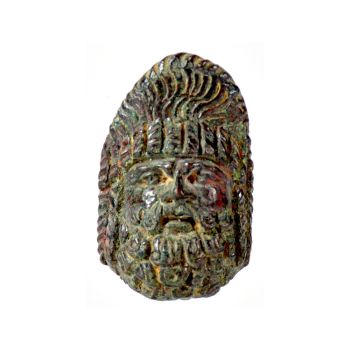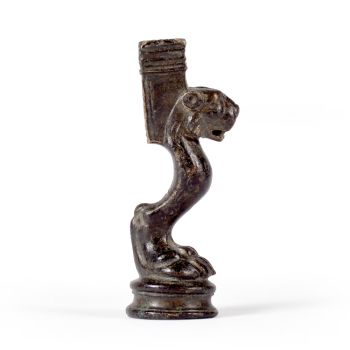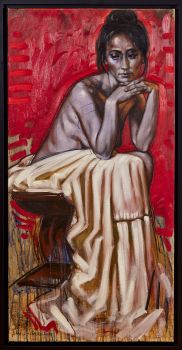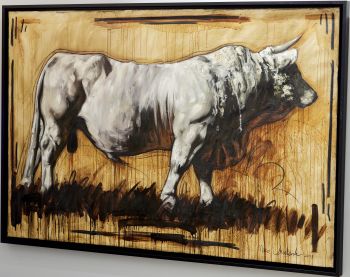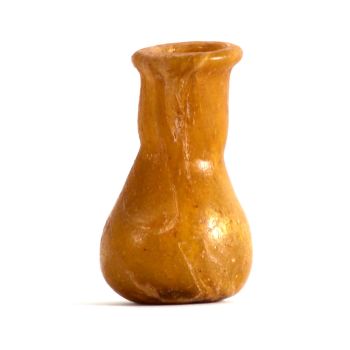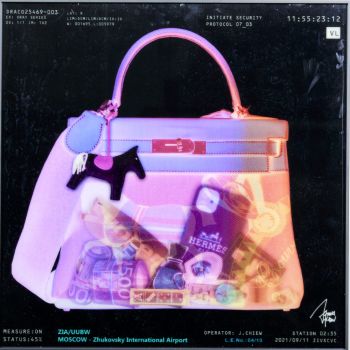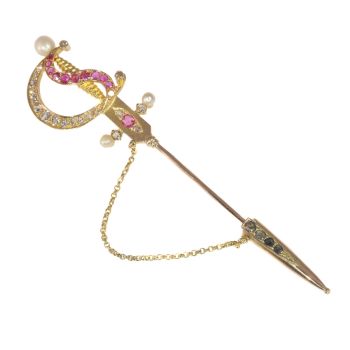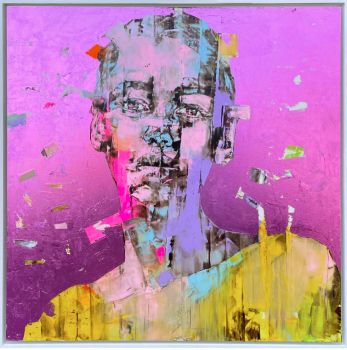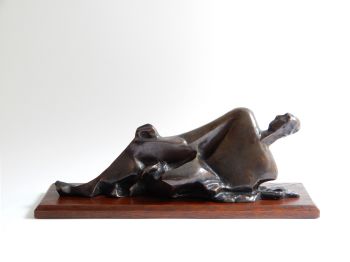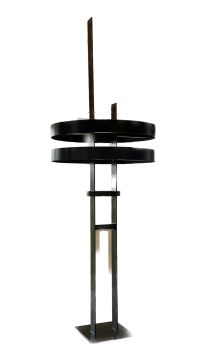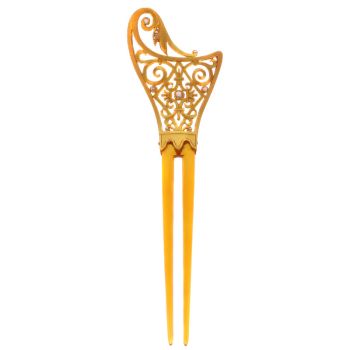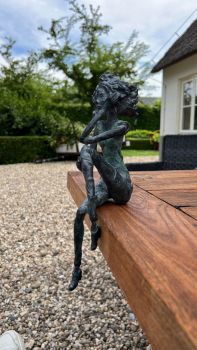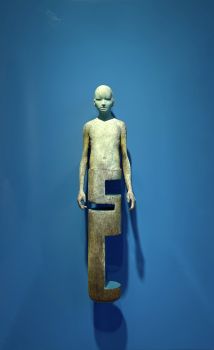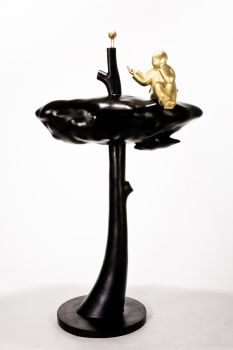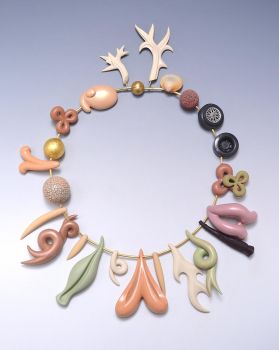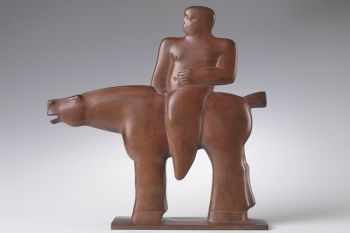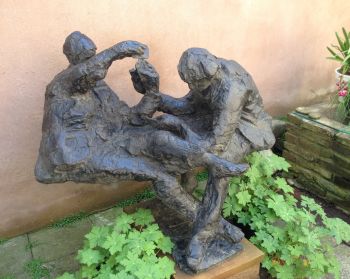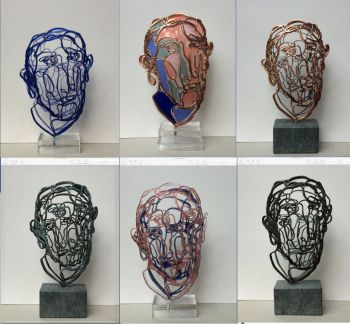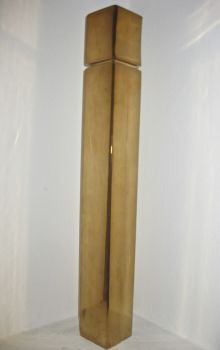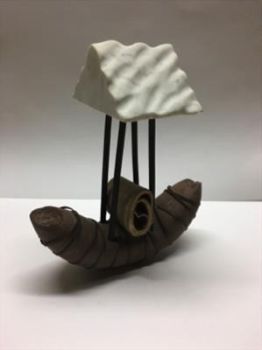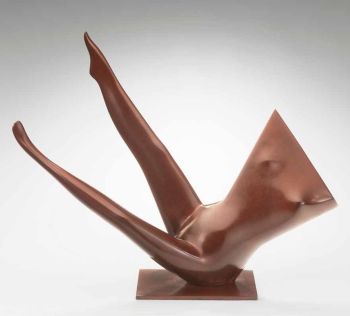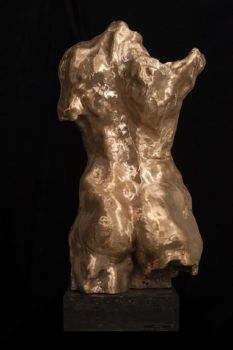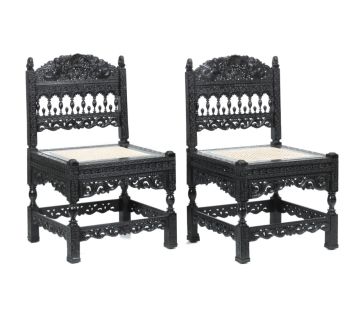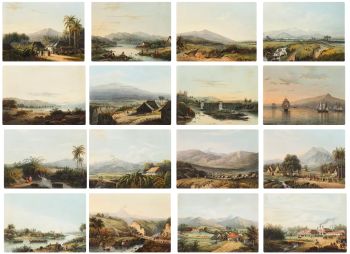A rare pair of Royal camel-guns or 'zamburak', formerly belonging to Maharaja Bahadur Singh of Ajmer 1857 - 1903
Unbekannter Künstler
HolzGoldMetall
116 cm
Derzeit nicht über Gallerease verfügbar
Zebregs & Röell - Fine Art - Antiques
- Über KunstwerkA rare pair of Royal camel-guns or 'zamburak', formerly belonging to Maharaja Bahadur Singh of Ajmer (1857-1903)
Rajasthan, Ajmer, dated Samvat 1952 (1895 CE)
Each cannon in polychrome wood and koftgari gold steel, inscribed 'Maharaj Shri Bahadur Singh Ji, Rajasthan Masuda Samvat 1952'.
L. 116 cm (each)
A zanburak, pronounced zamburak, is known in Arabic, Persian and Turkish as wasp, bee or hornet. ‘Zambur’ means hornet, and ‘ak’ is the diminutive - so ‘little wasp’. These swivel guns were carried by camels and were used by the Persians in the eighteenth century until their demise in 1849. In battle, the animals would be restrained on their knees and loaded as bombardiers, after which the weapons would be fired from atop their backs. Zamburaks were the Indian response to European horse artillery. However, the zamburaks were less mobile and thus less manoeuvrable than horse artillery. An Ottoman example of one of these guns mounted on a camel is illustrated by Marsigli in L'Etat militaire de l'Empire Ottoman in 1732. During the Sikh Wars (1846-1847 & 1848-1849), the speed of movement of the European horse artillery made the zamburaks useless. They were too slow, and their power was inadequate. They couldn’t catch up with the European horse artillery. That doesn’t, however, make them less impressive and frightening.
Provenance:
Maharaja Rao Saheb Bahadur Singh, Thakur of Masuda (reigned 1863-1903)
Collection Davinder Toor, London
Sources:
Roy Kaushik, ‘Military Synthesis in South Asia: Armies, Warfare and Indian Society, c. 1740-1849’, in: The Journal of Military History, Volume 69, no. 3, 2005, p. 662
Robert Elgood, Firearms of the Islamic World in the Tareq Rajab Museum, Kuwait, I.B. Tauris & Co. Ltd, 1995, p. 137-139 - Über Künstler
Es kann vorkommen, dass ein Künstler oder Hersteller unbekannt ist.
Bei einigen Werken ist nicht zu bestimmen, von wem sie hergestellt wurden, oder sie wurden von (einer Gruppe von) Handwerkern hergestellt. Beispiele sind Statuen aus der Antike, Möbel, Spiegel oder Signaturen, die nicht klar oder lesbar sind, aber auch einige Werke sind überhaupt nicht signiert.
Außerdem finden Sie folgende Beschreibung:
•"Zugeschrieben …." Ihrer Meinung nach wohl zumindest teilweise ein Werk des Künstlers
•„Atelier von ….“ oder „Werkstatt von“ Ihrer Meinung nach eine Arbeit, die im Atelier oder in der Werkstatt des Künstlers, möglicherweise unter seiner Aufsicht, ausgeführt wurde
•„Kreis von ….“ Ihrer Meinung nach ein Werk aus der Zeit des Künstlers, das seinen Einfluss zeigt, eng mit dem Künstler verbunden, aber nicht unbedingt sein Schüler
•"Art von …." oder „Anhänger von ….“ Ihrer Meinung nach eine Arbeit, die im Stil des Künstlers ausgeführt wurde, aber nicht unbedingt von einem Schüler; kann zeitgenössisch oder fast zeitgenössisch sein
•„Art von ….“ Ihrer Meinung nach ein Werk im Stil des Künstlers, aber späteren Datums
•"Nach …." Ihrer Meinung nach eine Kopie (jegliches Datums) eines Werks des Künstlers
• „Unterzeichnet …“, „Datiert …“. oder „Beschriftet“ Ihrer Meinung nach wurde das Werk vom Künstler signiert/datiert/beschriftet. Das Hinzufügen eines Fragezeichens weist auf einen Zweifel hin
• „Mit Unterschrift …“, „Mit Datum …“, „Mit Aufschrift ….“ oder „Trägt Unterschrift/Datum/Beschriftung“ ihrer Meinung nach die Unterschrift/Datum/Beschriftung von jemand anderem als dem Künstler hinzugefügt wurde
Sind Sie daran interessiert, dieses Kunstwerk zu kaufen?
Related artworks
Unbekannter Künstler
Edwardian Ring mit Farbwechsel Saphir1910 - 1920
Preis auf AnfrageAns Hemke-Kuilboer Juwelier & Antiquair
1 - 4 / 12Unbekannter Künstler
The bell of the VOC fortress in Jaffna, Sri Lanka1747
Preis auf AnfrageZebregs & Röell - Fine Art - Antiques
 Kuratiert von
Kuratiert vonDanny Bree
1 - 4 / 13- 1 - 4 / 8
- 1 - 4 / 24
Abraham Salm
Twenty-four chromolithographs of Java after A. Salm”1801 - 1876
Preis auf AnfrageZebregs & Röell - Fine Art - Antiques
1 - 4 / 12

